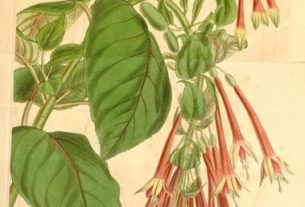The delightful spa town of Tequisquiapan, Querétaro
This article describes “a delightful little spa town too few foreign travelers have discovered”, to quote the 1979 edition of Fodor’s Guide to Mexico. Astonishingly, this description is as appropriate today as it was then.
Imagine, if you will, the following:
- a small town, only two hours by car from Mexico City, with winding cobblestone streets, lined by attractive and neatly kept one-storey buildings;
- a town which boasts a dozen or more “three star” hotels, all with thermal swimming pools, and a multitude of handicraft shops and galleries specialising in “basketware”;
- nearby, an excellent (if expensive) 18-hole golf course, open to the public;
- a specialist handicrafts market, a lively regular, daily, market and, on weekends, a line of small stalls selling precious stones and jewelry;
- a town small enough to walk around and bathed in sunshine virtually all year round;
- a town which even has an annual cheese and wine (and very good it is, too!) festival in early summer;
But where is this paradise-on-earth? Why, in Tequisquiapan, of course, in the central Mexican state of Queretaro.
First time visitors to Tequisquiapan are invariably struck by the cleanliness and sense of order that prevails around the town. Colourful purple bougainvillia tumbles down well-kept walls, merely hinting at the beautiful gardens behind. The narrow streets are carefully paved with a mosaic of small, apparently irregular, but actually cunningly designed interlocking stone blocks. There are no potholes or litter despite the disproportionately large number of hotels, restaurants and tourist shops around the centre. On subsequent visits, none of this changes – the visitor in agreeably surprised to discover that the bougainvillia still hugs the walls, that the town is at least as clean as the time before, a pleasant sensation in a country where litter and garbage seem to have invaded anywhere and everywhere.
Tequisquiapan is not a particulary historic town. The oldest “barrio” is far from the centre, on the far side of the San Juan river, spanned by a stone bridge. The river, on the banks of which grow the ancient cypress trees which provide the raw material for much of the local basketwork, has now been dammed, just to the south of the town, creating a picturesque lake.
Three sides of the town’s spacious central plaza have arcades or ” portales“. The fourth has the obligatory pale-coloured church with a single, squat, bell-tower to one side of its imposing entrance.
Mid-week, Tequisquiapan is deserted. A ghost town, waiting for revival. Revival occurs every weekend as hundreds of Mexico City dwellers flood out from the city in search of clean air and blue skies. The town’s restaurants begin to fill and the discos gear up for action lasting into the early hours. Most of the weekenders have their own second homes to stay in, so hotels remain fairly quiet. In an effort to hold onto what trade they can get, almost all hotels operate only American plan, in which three meals are included in the room rate. The hotels have an unofficial (and always firmly denied) price-fixing arrangement which the price per person is about US$45, regardless of which hotel you choose! The small and homely Posada del Virrey is an excellent choice if you want to stay in the town centre.
Even at weekends, nightlife in Tequisquiapan is hard to find and usually consists of a leisurely drink in one of the hotel bars, or a stroll around the plaza, exchanging pleasantries with friends and striking up acquaintances with people you meet. It is this leisurely air that pervades Tequisquiapan and draws people back. It is a place to unwind, to relax, to forget about the hustle and bustle of city life. After a few hours in the town, you begin to realise that wherever you go, whatever you do, you are likely to keep meeting the same people.
So, why get up early, or rush around trying to do things? Why not while away the weekend eating, drinking, sleeping and relaxing? Even the townspeople seem to exude a sense of “mañana”. Shops don’t open before 10:00 in the morning, preferring to remain shuttered rather than hasten the awakening of the town. And somehow everything seems much easier. The long lines often found in Mexican banks are absent; instead, a thin trickle of people dribbles in throughout the morning, never apparently in any particular hurry. But business gets done and the town remains prosperous and flourishing.
If you allow several days in the town, you give yourself the opportunity to explore several small towns well off the usual tourist trail. Bernal is famous for woollen sweaters and a monumental volcanic monolith towering over its streets. Villa Progreso, a town that, despite its name, progress seems to have by-passed, is a center for rope making. Cadereyta houses a cactus-farm, an obligatory stop for all cactus-lovers.
People who go to Tequisquiapan looking to do something, invariably leave disappointed, for there is nothing to do there. Those who go looking for a tranquil and satisfying respite from their busy twentieth century lives leave, just as invariably, restored and refreshed.

